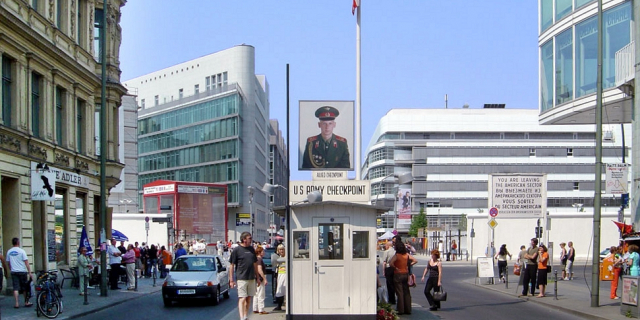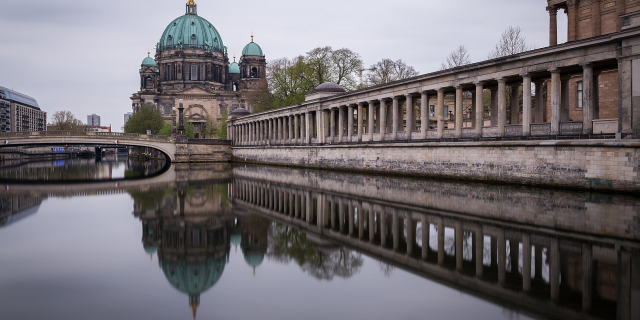Tempelhofer Feld
Tempelhofer Feld (English: Tempelhof Field) historically was an area in Berlin used for military practice, and as a parade ground of the Berlin garrison. It belonged to the Tempelhofer uplands on the Teltow plateau, in the south of Berlin. Tempelhofer Feld is closely linked to German military and aviation history, as well as German soccer history. Today it is a developed area, with the exception of the Tempelhofer Feld park on the site of the former Tempelhof Airport.





On 3 November 1897, the world's first rigid airship, an all-metal craft designed by Hungarian inventor David Schwarz, equipped with a 12-hp/9-kW Daimler engine, and shaped like a short, fat pencil, set off on its maiden flight from Tempelhofer Feld. It was destroyed on landing; pilot Ernst Jagels escaped with minor injuries.
Parade groundThe field located between the towns of Schöneberg and Tempelhof, then also known as Großes Feld (Great Field), was used by Schöneberg farmers as farmland until the 18th century. Under Frederick William I, it was also used as a military parade and drill ground from 1722 onwards, as well as a maneuvering area for the Prussian army. On August 2, 1881, the Hawaiian king Kalākaua was guest of a parade on the field.[1] The function as a parade ground was maintained until spring 1914.
Berlin-Tempelhof AirportIn 1922, work began to turn the area into Tempelhof Airport. The initial construction was completed by 1928, with further expansion planned by Ernst Sagabiel in 1934. The new airport building was then built from 1936 to 1941.
Starting in 1940, the airport building was used exclusively by the arms industry. For example, for the assembly and maintenance of the dive combat aircraft Ju 87. To conduct this work, thousands of forced laborers were brought from all over Europe, with their camps and accommodations located on the field itself.
After the end of World War II, flight operations resumed. The airport gained particular importance during the Berlin blockade from 1948 to 1949, with supply aircraft sometimes landing as often as every 90 seconds.
In 1970, after the construction of Tegel Airport, the airport was temporarily closed to civilian air traffic, reopening in 1985. All flight operations were later discontinued completely in 2008, due to the construction of the Berlin Brandenburg International Airport (BER), although this airport did not open until 2020.
Dispute about the continued use of the areaTwo German political parties, the CDU and FDP, initiated a referendum against the shutdown of flight operations. The referendum ultimately failed after not getting enough support from local citizens.[2]
Later, several thousand activists came together in an alliance called Squat Tempelhof in order to occupy the site and protest against the plans for re-use. This planned mass occupation of the closed field was to make the point that the area (unused and fenced off at the time), should be accessible to citizens. The Berlin Senate had promised that after the closure of the airport, the space would be opened to the general population but by June 2009 this had not yet happened. Many residents, as well as tenant alliances and the Green party came together to organize.[3] However, the occupation was prevented by the police. Around 1,500 officers were on duty and 102 demonstrators were arrested.[4]

































Add new comment